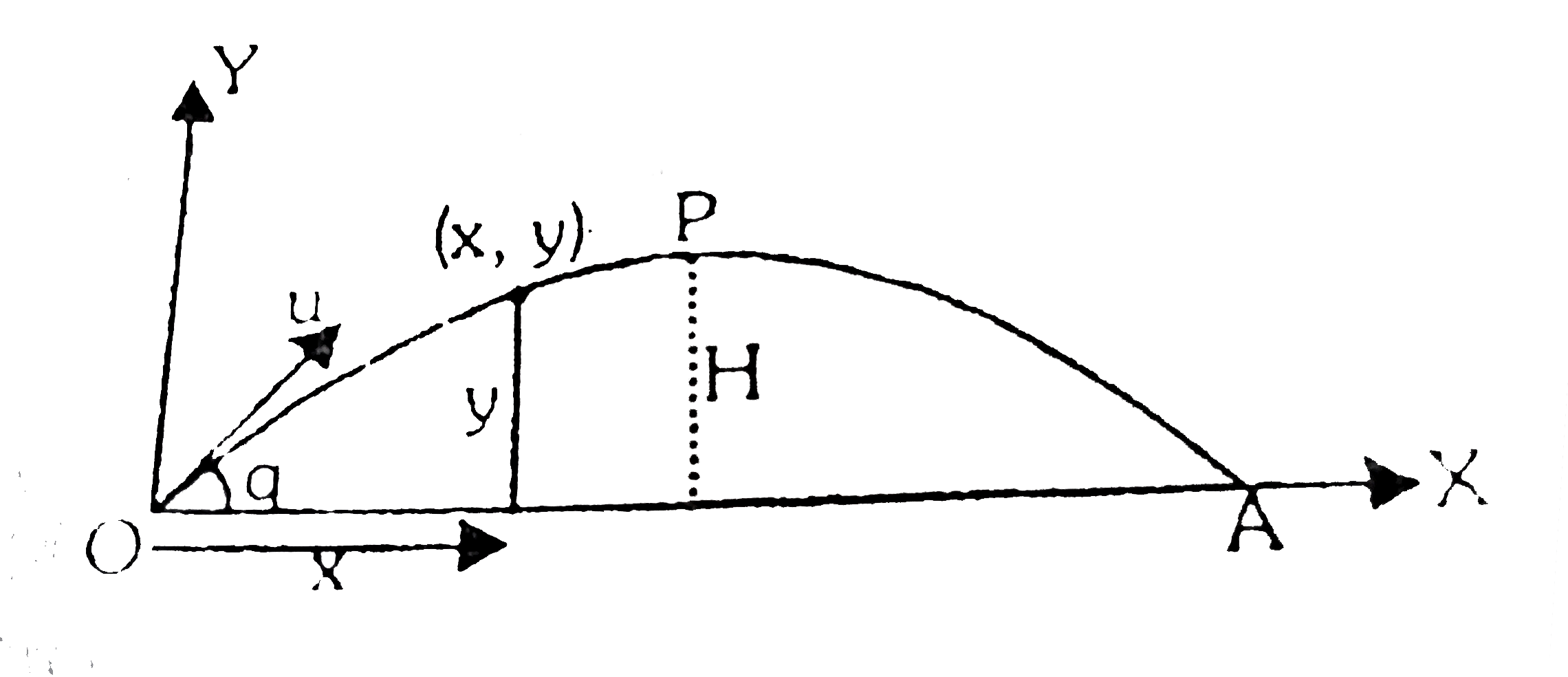The trajectory of a projectile in a vertical plane is y=ax−bx2, where a and b are constants and x and y are respectively horizontal and vertical distances of the projectile from the point of projection. The maximum height attained by the particle and the angle of projection form the horizontal are:
b22a,tan−1(b)
a2b,tan−1(2b)
a24b,tan−1(a)
2a2b,tan−1(a)
The correct Answer is:C
To solve the problem, we need to find the maximum height attained by the projectile and the angle of projection with respect to the horizontal. The trajectory of the projectile is given by the equation:
y=ax−bx2
where a and b are constants, and x and y are the horizontal and vertical distances, respectively.
Step 1: Find the maximum height
To find the maximum height, we need to determine the value of x at which y is maximized. We do this by taking the derivative of y with respect to x and setting it to zero:
1. Differentiate y:
dydx=a−2bx
2. Set the derivative equal to zero to find the critical points:
a−2bx=0
2bx=a⇒x=a2b
3. Substitute x=a2b back into the original equation to find the maximum height ymax:
ymax=a(a2b)−b(a2b)2
=a22b−b(a24b2)
=a22b−a24b
=2a24b−a24b=a24b
Thus, the maximum height attained by the projectile is:
ymax=a24b
Step 2: Find the angle of projection
The angle of projection θ can be found using the slope of the trajectory at the point of projection (where x=0).
1. Calculate the derivative at x=0:
dydx∣∣∣x=0=a−2b(0)=a
2. The slope of the trajectory at the point of projection is equal to tan(θ):
tan(θ)=dydx∣∣∣x=0=a
3. Therefore, the angle of projection θ is given by:
θ=tan−1(a)
Final Answers
- Maximum height attained by the projectile:
ymax=a24b
- Angle of projection with respect to the horizontal:
θ=tan−1(a)
dydx=a−2bx
a−2bx=0
2bx=a⇒x=a2b
ymax=a(a2b)−b(a2b)2
=a22b−b(a24b2)
=a22b−a24b
=2a24b−a24b=a24b
ymax=a24b
dydx∣∣∣x=0=a−2b(0)=a
tan(θ)=dydx∣∣∣x=0=a
θ=tan−1(a)
ymax=a24b
θ=tan−1(a)
Topper's Solved these Questions
- MOTION IN TWO DIMENSIONBook:A2ZChapter:MOTION IN TWO DIMENSIONExercise:Projectile From A Height And Movingframe
Explore 19 Videos
- MOTION IN TWO DIMENSIONBook:A2ZChapter:MOTION IN TWO DIMENSIONExercise:Projection From Inclined Plane
Explore 20 Videos
- MOCK TESTBook:A2ZChapter:MOCK TESTExercise:Motion With Constant Acceleration
Explore 15 Videos
- NEWTONS LAWS OF MOTIONBook:A2ZChapter:NEWTONS LAWS OF MOTIONExercise:Chapter Test
Explore 30 Videos
Similar Questions
Knowledge Check
The trajectory of a projectile in a vertical plane is y=ax−bx2, where aandb are constant and xandy are, respectively, horizontal and vertical distances of the projectile from the point of projection. The maximum height attained by the particle and the angle of projectile from the horizontal are.
Ab22a,tan−1(b)Ba2b,tan−1(2b)Ca24b,tan−1(a)D2a2b,tan−1(a)The horizontal range is four times the maximum height attained by a projectile. The angle of projection is
A90∘B60∘C45∘D30∘During a projectile motion if the maximum height equal the horizontal range, then the angle of projection with the horizontal is :
Atan−1(1)Btan−1(2)Ctan−1(3)Dtan−1(4)
The ratio of the speed of a projectile at the point of projection to the speed at the top of its trajectory is x. The angle of projection with the horizontal is
View SolutionThe trajectory of a projectile in a vertical plane is y=√3x−2x2. [g=10m/s2]

Angle of projection θ is :-
View SolutionThe trajectory of a projectile in a vertical plane is y=√3x−2x2. [g=10m/s2]

Maximum height H is :-
View SolutionA projectile is projected from ground such that the maximum height attained by, it is equal to half the horizontal range.The angle of projection with horizontal would be
View SolutionThe horizontal range and the maximum height of a projectile are equal. The angle of projection of the projectile is
View Solution